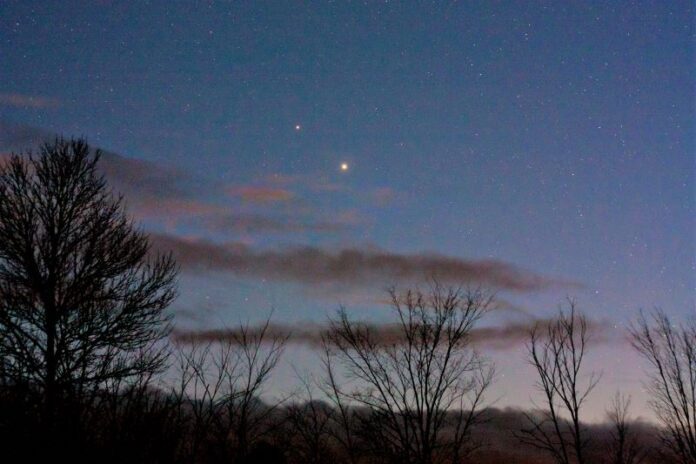by Gary Boyle – The Backyard Astronomer
2020 will be a year that will never be forgotten. For the past months, the entire world has suffered a high level of stress and anxiety from this pandemic. Normal routines of going to work, school, restaurants, concerts, sporting events, and movies came to a screaming halt. Other than reading, playing games, or binge-watching TV, people began looking skyward, some for the first time. And why not? Astronomy is the oldest of the allied sciences, and the night sky has been the place of deep relaxation for thousands of years. We also have the means of learning science as it plays out in the cosmos.
This year, we desperately needed a distraction, and then came Comet Neowise. It had put on a fantastic show throughout July, as it was seen with the naked eye even in the moonlight. This allowed millions of people around the world to observe and photograph this interstellar visitor. Neowise is now on its way back to the icy depths of space, only to return about 6,800 years from now.
The first week of October saw Mars at its closest approach to Earth since 2003. Our two worlds swing close to each other every 26 months, but every seventh return is deemed the closest. Mars is still seen overhead for most of the night, appearing high overhead as a bright orange object. Over the weeks and months, Mars dims ever so slowly as our distance increases with each passing day. We now end the year with two more celestial events that will entice people to look up once again – a grand meteor shower and a great conjunction of two planets.
Like ping pong balls on a table, the planets lie on the plane of the solar system with the Sun at the centre. Over months and years, the planets revolve around the Sun at different speeds. On occasion, two planets will optically come close to each other in the sky, called a conjunction. Brilliant Jupiter (887 million km away) and Saturn (1.6 billion km away to the upper left) are now visible low in the southwestern sky, will appear extremely close on the night of December 21, which also happens to be the Winter Solstice. A typical Jupiter-Saturn conjunction occurs every 20 years or so, but this year, they will appear as a double planet with a separation equal to 1/5 the width of the full moon. This will give telescope owners a rare treat of seeing these gas giants and their moons in the same field of view. This extreme close approach plays out every 397 years.
Many are associating this to the Star of the Magi, which was the close conjunction of the two brightest planets, namely Venus and Jupiter. On the night of June 17, 2 BC, they appeared to touch each other, which was deemed a sign. This is the closest astronomical event at the time, as Halley’s Comet was seen ten years prior in 12 BC, as recorded by the Chinese.
A week before the December 21 grand conjunction, the Geminid meteor shower will peak on the night of December 13/14, producing 120 slow-moving meteors per hour. There will be a few fireballs that can light up the ground. This is one of the best showers of the year and moonlight will not interfere.
Till next time, clear skies.
Known as “The Backyard Astronomer”, Gary Boyle is an astronomy educator, guest speaker and monthly columnist for the Royal Astronomical Society of Canada. He has been interviewed on more than 50 Canadian radio stations and local Ottawa TV. In recognition of his public outreach in astronomy, the International Astronomical Union has honoured him with the naming of Asteroid (22406) Garyboyle. Follow him on Twitter: @astroeducator or his website: www.wondersofastronomy.com.




